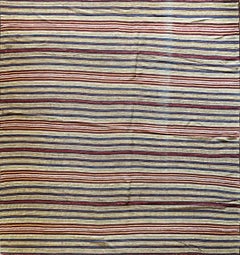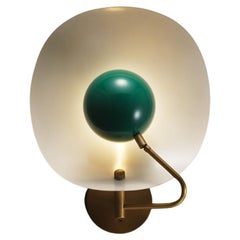Anatolian Jajim Kilim
Late 20th Century Turkish Kilim Turkish Rugs
Wool
Late 20th Century Turkish Kilim Turkish Rugs
Wool
Early 20th Century Persian Kilim Persian Rugs
Wool
Mid-20th Century Persian Kilim Persian Rugs
Wool
Mid-20th Century Turkish Minimalist Turkish Rugs
Wool
People Also Browsed
2010s American Mid-Century Modern Wall Lights and Sconces
Brass, Bronze, Enamel, Nickel
2010s American Flush Mount
Brass
20th Century Persian Other Persian Rugs
Wool
20th Century Persian Other Persian Rugs
Wool
21st Century and Contemporary British Modern Ceramics
Ceramic
Antique Late 19th Century French Aesthetic Movement Barware
Earthenware
Early 20th Century English Aesthetic Movement Pitchers
Earthenware
Early 20th Century Hungarian Folk Art Vases
Earthenware, Terracotta
21st Century and Contemporary American Modern Figurative Sculptures
Stone
Early 20th Century English Edwardian Pitchers
Stoneware
Early 20th Century Victorian Animal Paintings
Canvas, Oil
2010s American Modern Benches
Steel
20th Century Belgian Paintings
Paint
Antique 15th Century and Earlier Chinese Han Pottery
Pottery
2010s American Modern Benches
Steel
Late 20th Century Indian Islamic Decorative Boxes
Brass
Recent Sales
Early 20th Century Persian Kilim Benches
Mid-20th Century Turkish Kilim Turkish Rugs
Wool
20th Century Turkish Kilim Turkish Rugs
Wool
Early 20th Century Kilim Benches
Cotton
A Close Look at kilim Furniture
Known for their wealth of rich colors and unique weaving tradition, antique and vintage kilim rugs are one of the most distinguishable types of rugs. The term “kilim” is Turkish in origin, but many variations of this type of textile share a common heritage and are practiced all across the Balkans, throughout the Arab world and elsewhere. There are Persian kilim rugs, kilim rugs from Central Asia and more.
It is difficult to definitively pin down the origins of kilim weaving, which is known as a “flatweave” or “slit-weave,” but historians believe that skilled artisans may have practiced versions of it as early as the eighth and ninth centuries A.D. in the Anatolia region of Turkey. Many of the Turkish iterations of these flat-woven rugs are recognizable for their arrangements of dazzling, flowing forms, but a range of motifs can appear in kilim rugs — abstract figures that reference rams’ horns, snakes or running water or motifs that are intended to symbolize concepts such as the tree of life or fertility. In Anatolia, women have used kilims to share narratives about their lives.
The difference between a kilim rug and most other kinds of carpets or pile rugs is in the aforementioned weave. They are made by interweaving variously colored, individual strands of wool (pure soft cotton, silk and goat’s hair are also used with the wool, albeit rarely) versus, say, the Tabriz rugs of Iran, which are hand-knotted rugs. This results in a smooth, frequently reversible surface. It’s a slit-weave because of the gap left between two blocks of color. Kilims are created on a loom, a typically uncomplicated structure mostly made of wood. Owing to the creative freedom that a slit-weave can afford its weaver, they tend to feature a range of bright, contrasting hues like reds, oranges and pinks that appear in bold combinations with deep blues and greens that are brought to life with natural dyes.
Handwoven kilim rugs are less expensive to produce and more durable than other rugs. They were traditionally used as floor coverings in mosques and yurts, as prayer rugs and saddle coverings. And these textiles are pileless: Whereas the Beni Ourain rugs of Morocco can be described as dense with a thick surface or pile, an authentic kilim rug is thin and flat. Because the resulting weave is lightweight, kilim rugs are well adapted for use in the hot summer months, and they are happily embraced by tribal weavers of Morocco, a part of the world that is home to many styles of rugs.
With their striking geometric patterns and provocative color pairings, kilim rugs and wall tapestries are loved by design enthusiasts and can bring charm and interest into any dining room, living room or other interior space.
Find kilim rugs and textiles and other vintage rugs on 1stDibs.
Finding the Right rugs-carpets for You
Good antique rugs and vintage rugs have made their way into homes across the globe, becoming fixtures used for comfort, prayer and self-expression, so choosing the right area rug is officially a universal endeavor.
In modern usage, “carpet” typically denotes a wall-to-wall floor cushioning that is fixed to the floor. Rugs, on the other hand, are designed to cover a specific area and can easily be moved to new locations. However, the terms are interchangeable in many parts of the world, and, in the end, it won’t matter what you decide to call it.
It’s well known that a timeless Persian rug or vintage Turkish rug can warm any interior, but there are lots of other styles of antique rugs to choose from when you're endeavoring to introduce fresh colors and textures to a bedroom or living room.
Moroccan Berber rugs are not all about pattern. In fact, some of the most striking examples are nearly monochrome. But what these rugs lack in complexity, they make up for in brilliant color and subtle variation. Moroccan-style interiors can be mesmerizing — a sitting room of this type might feature a Moroccan rug, carved wooden screens and a tapestry hung behind the sofa.
Handwoven kilim rugs, known for their wealth of rich colors and unique weaving tradition, are pileless: Whereas the Beni Ourain rugs of Morocco can be described as dense with a thick surface or pile, an authentic kilim rug is thin and flat. (The term “kilim” is Turkish in origin, but this type of textile artistry is practiced all across the Balkans, throughout the Arab world and elsewhere.)
When it comes to eye-catching floor coverings, the distinctive “medallion” pattern of Oushak rugs has two types of rounded shapes alternating against a rich red or blue background created with natural dyes, while the elaborate “star” pattern involves large eight-pointed shapes in diagonal rows alternating with diamonds.
If you’re looking for something unexpected, find a runner rug that pops in your hallway or on your stairs. Dig for dazzling geometric patterns in our inventory of mid-century modern rugs and carpets, which includes works designed by the likes of Swedish textile masters Märta Måås-Fjetterström, Marianne Richter and other artisans.
Carpets and rugs have been around for thousands of years. Prehistoric humans turned to animal skin, wool and fur to craft simple fabrics to soften hard terrain. A 2016 study suggests that "cave lions" were hunted for exactly this purpose, and that decorating your cave with their pelts may have conferred strength and prestige. Although many of these early textiles are still in existence, tracing their precise origins is difficult. Carpets quickly became such a valuable trade commodity that the weavings could easily travel far from their places of origin.
The oldest known carpet was found in southern Siberia. (It may have traveled there from Persepolis in Iran.) For the flat-weave floor rugs crafted by Native Americans, cotton was the primary material before sheep’s wool was introduced in the 16th century. In Europe, carpet-making was fundamental to folk art, and Asian carpets imported to European countries were at one time considered a precious luxury and not intended to remain permanently on the floor.
With the variety of area rugs and carpets rolled out for you on 1stDibs — a collection that includes traditional, modern, minimalist rugs and other coverings of all kinds — things will be looking up whenever you’re looking down.








